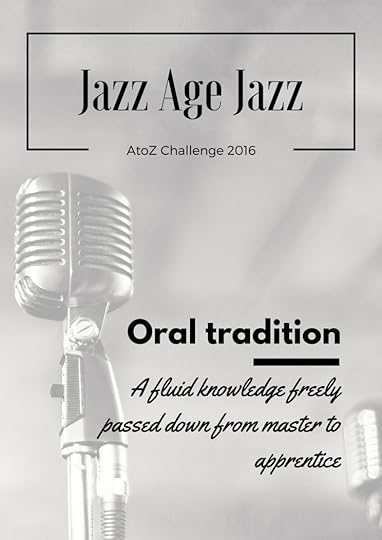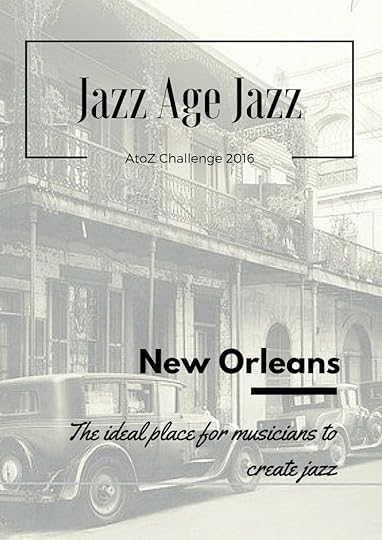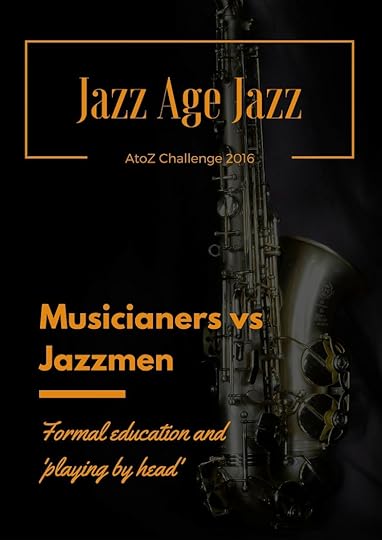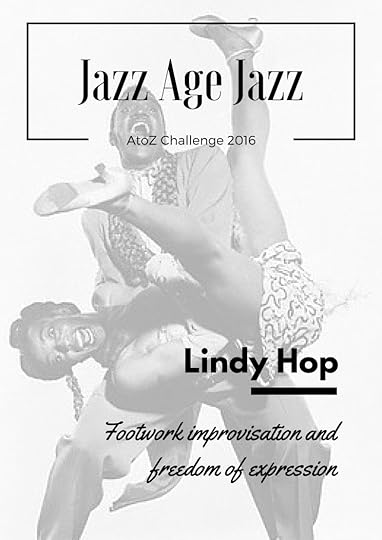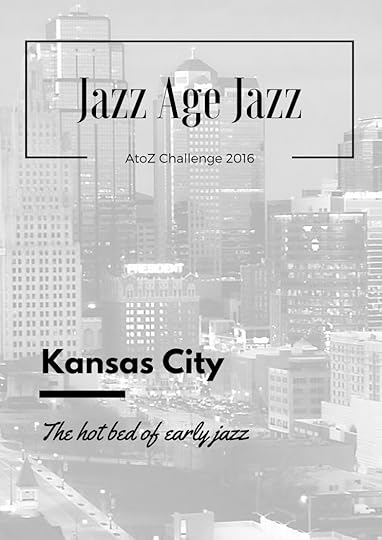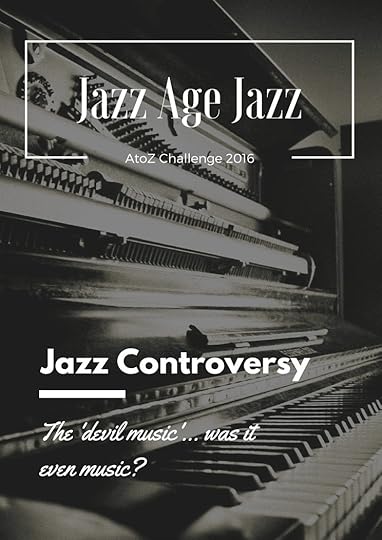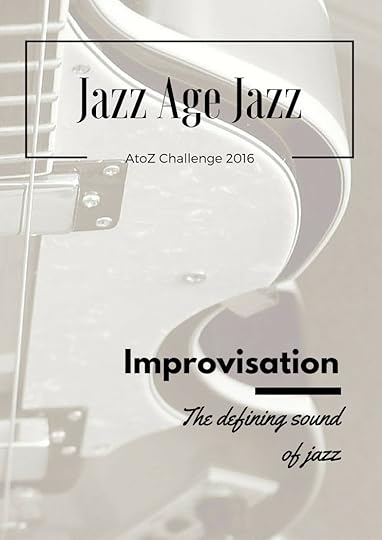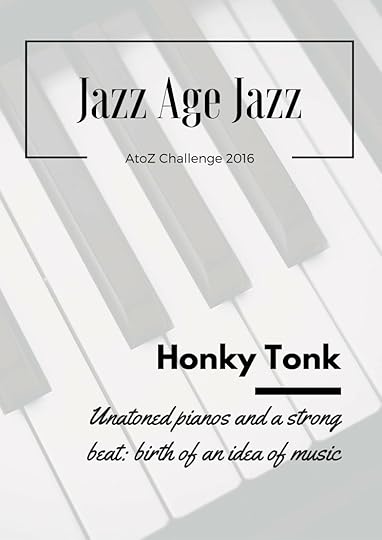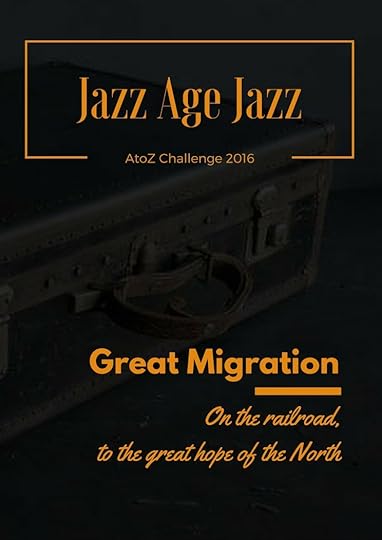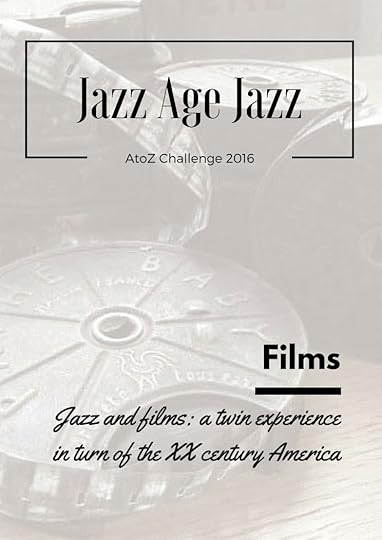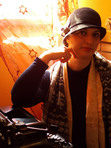Sarah Zama's Blog, page 64
April 17, 2016
Oral Tradition (AtoZ Challenge 2016 – Jazz Age Jazz)
JAZZ AGE JAZZ - Oral Tradition #AtoZChallenge Passing knowledge down freely and fluidly
Click To Tweet
Many early jazzmen didn’t have any formal music education and they couldn’t read music. They learned everything they knew by ear.
Their lack of formal education was one of the reasons some critics sustained the lower value of jazz in comparison to classic music. This was because they understood the term ‘know’ uniquely as a body of intellectual knowledge, but intuition and the ear can sometimes ‘know’ more than the intellect does. By listening to the bests and trying to imitate that sound, younger jazzmen intuitively learned music.
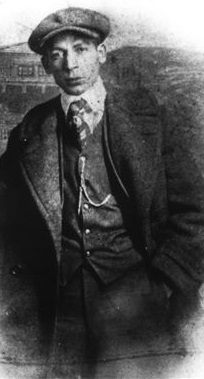 Young Jelly Roll Morton
Young Jelly Roll MortonThe roots of jazz are firmly planted in the African oral tradition. African masters of music orally handed down their knowledge to the younger generation without the help of any written information. The experience was normally very experimental and more fluid than written music education.
This experimentation and the lively interchange of knowledge and experience is at the heart of call-and-response techniques that are so vital to jazz performance.
Oral tradition encompasses African American culture as a whole. It influences Afro-American speech, folklore, literature and music – and it comes from long ago. Slaves from Africa often lacked a common language. Written literacy was greatly restricted to them and their descendants well into the XX century. This is why music served a crucial role in handing down black history and values, which then converge into many different, new forms of music. Jazz was one of them.
Participatory performance practices that relied on communal creation, call-and-response and a strong tradition of improvisation helped African-Americans to accommodate to the dominant white culture without being completely absorbed by it.
————————————————————————————————————————————
RESOURCES
Ogren, Kathy J., The Jazz Revolution. Twenties America and the Meaning of Jazz. Oxford University Press, New York, 1989
Hal Galper – The Oral Tradition
Academia – Jazz Education: methodes and difficulties of teaching music derived from an oral tradition (PDF)
Smashwords | Barnes&Nobles | Kobo | iBookStore
And many other stores
The post Oral Tradition (AtoZ Challenge 2016 – Jazz Age Jazz) appeared first on The Old Shelter.
April 15, 2016
New Orleans (AtoZ Challenge 2016 – Jazz Age Jazz)
JAZZ AGE JAZZ - New Orleans #AtoZChallenge Where #jazz took its first steps
Click To Tweet
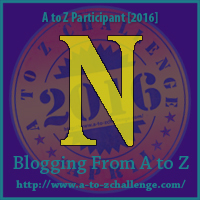 Where, when and why a certain kind of music was born may be very hard to define, particularly with regard to popular music. A particular kind of music may have existed for decades in certain communities before the general public became aware of it.
Where, when and why a certain kind of music was born may be very hard to define, particularly with regard to popular music. A particular kind of music may have existed for decades in certain communities before the general public became aware of it.
That’s the case for jazz. By the time the general public became aware of it, jazz had been played in African American communities throughout the South – nobody know for how long.
This being said, today it is generally accepted that jazz arose in and around New Orleans at the turn of the XX century. At that time the city offered a unique combination of different cultural elements and influences that made it one of the foremost environments in which musicians created jazz.
A port city with doors to the spicy sounds of Caribbean and Mexico, very tolerant of the slave culture and home to a well-established black population, New Orleans was also still very strongly linked to her European origins, especially French and Spanish.
In this cultural and musical melting pot, jazz began to emerge as part of a broader musical revolution encompassing ragtime, blues, spirituals and marching bands among other experiences.
 Joe “King” Oliver
Joe “King” OliverMuch of this revolution happened in Storyville, New Orleans red-light district.
Storyville was established in 1897 by Sidney Story, a city official who supported an ordinance that confined the red-light district to a 38-block area. It was closed down by order of the Secretary of the Navy in 1917. This area was the only one in which white and a few black prostitutes could legally play their trade.
Like tenderloins and vice districts in many other cities, Storyville was controlled by collusion between politicians, entrepreneurs and the underworld. It brimmed with entertainment spots, like restaurants, bars, saloons, gambling houses and of course brothers – and all those places needed music. This is where many African American musicians (who were bar access to more respectable establishments) found job.
Dealing with a kind of audience who hardly care for the music being played, these musicians had almost unlimited freedom to experiment and to work out stylistic qualities of their own, in a very free, unconventional way.
But there was another element that made New Orleans pretty unique in the creation of jazz: his Creole population.
The Creaoles were free, French and Spanish speaking blacks originally from the West Indies. Because they were descendent from the first Europeans, they had a European education and could rose to the highest levels of New Orleans society, both economical and political. Most of them lived in the French Quarter of the city, east of Canal Street. The Creaoles loved music and many were conservatory educated.
In sharp contrast to them were the people of the American part of the city, who lived west of Canal Street. They were mostly newly freed slaves, uneducated and lacking any economic and cultural advantage, but experienced in gospel and work songs and very skilful in learning music by ear and improvising.
In 1894 a segregation law forced Creoles to move on the other side of Canal Street and forced to live in an environment very different from the one they came from. This certainly proved to be an ordeal for all parties involved, but there finally came a balance. As the Creoles merged into the cultural fabric of that part of the city, they brought to it their history, culture and education. It is likely that they were the actual cultural enactors of that mix of African American and European musical culture that would later allowed the birth of jazz.
————————————————————————————————————————————–
RESOURCES
Ogren, Kathy J., The Jazz Revolution. Twenties America and the Meaning of Jazz. Oxford University Press, New York, 1989
YouTube – A visit to Storyville, New Orleans’ most famous red light district
Storyville Disctrict – All that jazz
Red Hot Jazz – The origin of jazz
National Park Cervice – A New Orleans Jazz History 1895-1927
About Entertainment – What is early jazz
Jazz – Chapter 4 (outline)
UCLA Universtity – Blue Horizon: Creaole culture and early New Orleans jazz
History – New Orleans
Smashwords | Barnes&Nobles | Kobo | iBookStore
And many other stores
The post New Orleans (AtoZ Challenge 2016 – Jazz Age Jazz) appeared first on The Old Shelter.
April 14, 2016
Musicianers vs. Jazzmen (AtoZ Challenge 2016 – Jazz Age Jazz)
JAZZ AGE JAZZ - Musicianers vs Jazzmen #AtoZChallenge Reading music in early #jazz
Click To Tweet
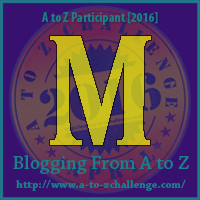 Unconventionality and freedom of expression are characteristics of jazz and brought it both praise and criticism.
Unconventionality and freedom of expression are characteristics of jazz and brought it both praise and criticism.
Early jazz was often learned by ear (or ‘by head’, as jazzmen said), especially in New Orleans. These musicians often had no formal musical education. Their school were the honky tonk and the jam sessions where they would listen to more expert musicians and try to imitate that music on their instruments.
Much of this listening and performing happened in the streets of New Orleans where the marching bands operated.
Marching bands (or brass bands) started right after the Civil War, when African Americans salvaged instruments (especially brass) from the military bands. These bands played for the community, mostly outdoors, for any occasion: weddings, funerals, festivals, pick-nicks, social dances. There were numerous marching bands in the city and they would fight for audience in music competitions that often happened on street corners. Turn of the XX century New Orleans was a place where music was everywhere.
The most experience musicians would play in the front of the marching band and were therefore called front liners. If a young musician wanted to play along, he could do so in the second line. If and when he ever proved himself, he could be accepted in the front line.
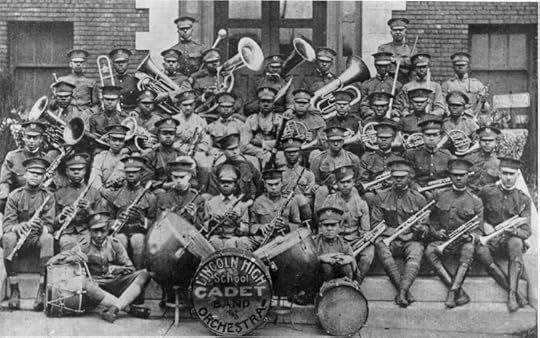 Lincoln High School Cadet Band and Orchestra (1920)
Lincoln High School Cadet Band and Orchestra (1920)Many youngsters and aspiring musicians joined the marching bands as second liners. This was a very common means of musical education in New Orleans. Other began playing on their own, often at a very young age, sometimes in ‘spasm bands’, bands who played all sorts of gadgets that produced sound: musical saws, washboards, spoons, bells, sand paper, sets of bottles.
This kind of alternative, intuitive, free-styled music attracted a lot of criticism from more established musicians, but also from community leaders. Many argued that this wasn’t music. Music should be beautiful and follow classic rules of composition, not clang together any kind of noise. In conservatories, many teachers refused to teach jazz, a lower music practiced by people who couldn’t ‘play by the book’.
But there were jazzmen who could read music. In New Orleans, they were mostly Creoles who had indeed received a formal musical education. Differences in music-reading abilities led several New Orleans performers to describe themselves in two different ways: those who could read music were nicknamed ‘musicianers’ and those who could not – who ‘ragged’ or ‘jazz’ it – were of course ‘jazzmen’.
————————————————————————————————————————————-
RESOURCES
Ogren, Kathy J., The Jazz Revolution. Twenties America and the Meaning of Jazz. Oxford University Press, New York, 1989
I was doing all right – Lerning to improvise: ear training
New Orleans Online – Second Liners
Smashwords | Barnes&Nobles | Kobo | iBookStore
And many other stores
The post Musicianers vs. Jazzmen (AtoZ Challenge 2016 – Jazz Age Jazz) appeared first on The Old Shelter.
April 13, 2016
Lindy Hop (AtoZ Challenge 2016 – Jazz Age Jazz)
JAZZ AGE JAZZ - Lindy Hope #AtoZChallenge The street dance that swept the Savoy
Click To Tweet
 Lindy Hop is primarily a street dance and probably originated in Harlem in 1920s. It consists of both 8 or 6 count steps and includes footwork borrowed from the Charleston and tap, but with the addiction of a breakaway, where the partners can improvise new steps as the music inspires them.
Lindy Hop is primarily a street dance and probably originated in Harlem in 1920s. It consists of both 8 or 6 count steps and includes footwork borrowed from the Charleston and tap, but with the addiction of a breakaway, where the partners can improvise new steps as the music inspires them.
It can be wild and spontaneous, with frenzy kicks and body movements or cool and sophisticated.
The Savoy Ballroom in Harlem is where the dance became more popular and was launched on a national scale.
The Savoy was a huge ballroom which took up an entire block at 141st Street and Lenox Avenue. It was one of the very few truly integrated clubs were patrons could mix and dance together, exchanging steps and inspiration.
The name seems to have had a colourful origin. The dance became extremely popular in the second half of the decade. That’s when Charles Lindbergh succeeded in his solo flight across the Atlantic, his ‘hop’ between continents. It was a grand fit that produced great news coverage. Everybody spoke about that, those words became a refrain of those years. And attached themselves to this popular dance.
————————————————————————————————————————————-
RESOURCES
The Lindy Circle – Lindy Hope History
Swungover – Swing History 101: the birth of Lindy Hop (1900s – 1929)
Drop Me Off in Harlem – Lindy Hop in Harlem: the role of social dancing
Easy Swing – Hisotry of Lindy Hop
Smashwords | Barnes&Nobles | Kobo | iBookStore
And many other stores
The post Lindy Hop (AtoZ Challenge 2016 – Jazz Age Jazz) appeared first on The Old Shelter.
April 12, 2016
Kansas City (AtoZ Challenge 2016 – Jazz Age Jazz)
JAZZ AGE JAZZ - Jazz Controversy #AtoZChallenge Kansas City may be where jam sessions started off…
Click To Tweet
Jazz may have originated in the New Orleans area, but it then disseminated all across the United States. In a few places, it found a particularly fertile environment which allowed it to evolve in a very particular, characteristic way.
Kansas City Style
 Starting in the 1920s, Kansas City, Missouri, transformed itself in the Mecca for young jazz musicians. The city’s conditions were particularly favourable. Kansas City was far enough from the biggest cities in the East and West to be influenced, but not suffocated by their styles of jazz. It was also a crossroad for the railroad and for domestic flights, with people (and musicians) coming and going on a daily bases.
Starting in the 1920s, Kansas City, Missouri, transformed itself in the Mecca for young jazz musicians. The city’s conditions were particularly favourable. Kansas City was far enough from the biggest cities in the East and West to be influenced, but not suffocated by their styles of jazz. It was also a crossroad for the railroad and for domestic flights, with people (and musicians) coming and going on a daily bases.
During Prohibition, it applied a ‘wide open’ policy that allowed entertainment industry to prosper.
No wonder it became a hotbed for jazz experimentation.
All this permitted the evolution of a distinguished style of jazz characterised by competition and strong experimentation. Jam sessions supposedly emerged in Kansas City, where big bands, big gathering of musicians, were the norm. Kansas City jazz style relied greatly on improvisation, repetitive phrases and riffs. Because many of the early practitioners of Kansas City jazz were travelling musicians staying in town only briefly, the musical arrangement remained simple enough for all to learn quickly, so to allow a high lever of improvisation.
 William “Count” Basie
William “Count” BasieNew Orleans Style
It was the most popular in the Twenties, but also the style that most suffered in the following decades. Based on small bands, leaning very much on the brass and percussions sections, presented a highly syncopated sound and relied greatly on communal improvisation.
Chicago Style
Because many performers had immigrated from the Mississippi region, the Chicago style resembles a lot New Orleans style. It relied mostly on smaller ensembles, was very harmonic and innovative in the arrangement.
New York Style
The piano took a central importance in this big band style of music. The traditional southern brass instrumentation was played by piano, which was considered a wealthier, more sophisticated instrument.
The first piano style to be incorporated into jazz was the stride piano, which was very popular in New York City.
Big orchestras were the norm.
————————————————————————————————————————————-
RESOURCES
Scalar – Paris of the Plains
Encyclopedia of the Great Plains – Kansas City Jazz
Encyclopedia of Chicago – Jazz
wttw – From Riot s to Renaissance – Jazz and Blues Music
Jass – Jazz, the first thirty years
River Walk Jazz – New York Session: the Evolution of Studio Bands
Greg Tivis – Jazz Style, the sub-genres
Smashwords | Barnes&Nobles | Kobo | iBookStore
And many other stores
The post Kansas City (AtoZ Challenge 2016 – Jazz Age Jazz) appeared first on The Old Shelter.
April 11, 2016
Jazz Controversy (AtoZ Challenge 2016 – Jazz Age Jazz)
JAZZ AGE JAZZ - Jazz Controversy #AtoZChallenge In 1920s America, #jazz didn't have it easy
Click To Tweet
 In the Twenties, everybody danced to jazz. Everybody listened to jazz. Musicians wanted to learn jazz. Recording industries and the showbiz wanted to make money off of jazz.
In the Twenties, everybody danced to jazz. Everybody listened to jazz. Musicians wanted to learn jazz. Recording industries and the showbiz wanted to make money off of jazz.
So everybody noticed jazz and started to think about jazz. Big trouble ensued.
As the popularity of jazz rose through the decade, it arose fierce opposition and hot support.
Detractors thought jazz was messy and unprofessional – when they didn’t dismissed it altogether as just noise – produced by low-class elements of society – that meant mostly African Americans – who had little or no musical education and relied on improvisation and playing ’by head’ because they could not read music.
Lovers hailed it as a profoundly new way to make music, the sound of their time, fast and exciting. A new language for a new century and a new society. They saw improvisation as the highest manifestation of freedom.
But however they thought about it, be it good or evil, critics on both sides agree that jazz was the symbol of the fundamental – and provocative – changes they were experiencing in their post-WWI urban, industrial society. It strongly connected to their time.
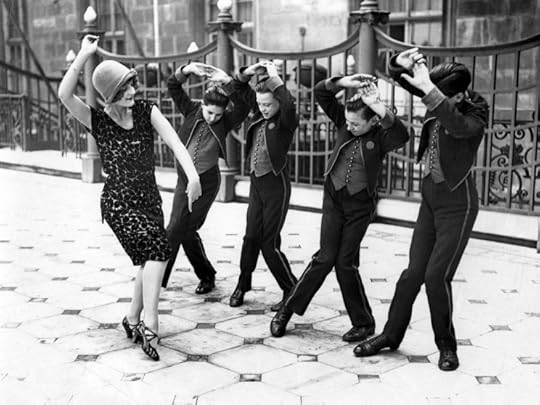 Dancing the Charleston
Dancing the CharlestonDetractors of jazz actually had a lot to bring to the table… so they thought.
First of all, jazz was clearly evil since it had first emerged in shady places, like brothels and honky tonks. And as the Teens turned into the Twenties, it didn’t go any better. Jazz would be performed mostly in nightclubs and speakeasies, establishments that were notoriously tide to bootlegging rings. Many performers found themselves on gangsters’ payroll. Bad.
Black-and-tan clubs would allowed both black and white patrons and in some of these establishments there was no restriction to free mixing and dancing. Very bad.
If this were not enough, jazz was thought to be barbaric, to take down moral barriers and stimulate sexual activity. Besides the dances that jazz inspired were quite plainly very sexy. This was of course a great danger for young people, most of all women. Who, by the way, were never allowed into saloons, but now frequented speakeasies, drank and danced, just like – and together with – men. Very very bad.
As jazz became ever more popular, community groups as well as groups of private citizens asked for a regulation of the music. In 1927 the Government finally issued the Radio Act, which encouraged the transmission of sanitized jazz rather than the more lively, more cutting age jazz played in nightclubs.
By the end of the 1920s, at least 60 communities across the United State had enacted laws prohibiting jazz from public halls.
One would think jazz was only music, after all. But detractors seem to fear jazz because it was different. It featured improvisation over tradition, performer over composer, and black American expression over conventional white sensibility. In short, it was subversive. But it was the language of a new era and a new society and they could not snuff it.
—————————————————————————————————————————————
RESOURCES
Ogren, Kathy J., The Jazz Revolution. Twenties America and the Meaning of Jazz. Oxford University Press, New York, 1989
PBS – The Devil’s Music: 1920s Jazz
Quora – Why was jazz ocnsidered the devil’s music?
Smashwords | Barnes&Nobles | Kobo | iBookStore
And many other stores
The post Jazz Controversy (AtoZ Challenge 2016 – Jazz Age Jazz) appeared first on The Old Shelter.
April 10, 2016
Improvisation (AtoZ Challenge 2016 – Jazz Age Jazz)
JAZZ AGE JAZZ - Improvisation #AtoZChallenge #jazz and the freedom to create music together
Click To Tweet
Louis Armstrong said that if you need to ask what jazz is, you’ll never know. It’s true that the nature of jazz is elusive, even experts are often at a loss to define it as opposed to other forms of music. But there’s something everyone agrees with: jazz is about improvisation.
There’s a common misconception that improvisation happens randomly. Because many small jazz bands don’t read music when they perform, listeners may have the impression the performers are going along completely freely. In fact, the contrary is true. Spontaneous jazz improvisation requires a deep understanding of the music and its workings. Jazz players will chose phrases which structure is so familiar to them, they intuitively know where it’s going even though it’s been created in that instant. The musicians all know the tune and the role of their instrument inside the tune, and so they can spontaneously create different forms of the theme and variations.
The guitar, piano, bass and drums, while all able to solo, basically provide the rhythm and harmony over which the soloist will create improvised variations. The structure is flexible so that the soloist may venture in various directions depending on the inspiration of the moment. A Jazz musician is creating spontaneous art every time he or she plays music. In fact, spontaneity has always characterized Jazz music’s finest improvisers.
Freedom in jazz improvisation comes from an understanding of structure. It may seem as the soloist may do whatever they like, but in fact the soloist is following a complex set of rules. Being creative means knowing how to move inside that context and how to bend it to your personality and creativity.
 Fletcher Handerson
Fletcher HandersonThe role of the soloist became very important from the beginning of the 1930s, but early jazz was characterised by a different kind of improvisation, what was called “collective improvisation”. This way of making music leans very strongly on call-and-response, both among musicians and between musicians and audience. In the 1920s, ballrooms, nightclubs, speakeasies were ideal places where improvisation and free audience/performers interaction happened. The unpredictable mix of music, guests, dancers and bathtub gin was explosive. It could mix every night in a different way, Anything could inspire the performers to a new path in the music.
But as the decade wore on, something happened. Jazz started to be recorded and those records were extremely popular. Recordings needed to be standardised and that dictated which performance and which actual improvisation would be preserved. Aspiring musicians increasingly learned jazz from those recordings rather than live, as their predecessors had done. Over time, this subtly changed the way jazz was played and improvised. By the end of the 1920s, jazz had surrendered its popularity to swing.
————————————————————————————————————————————
RESOURCES
Ogren, Kathy J., The Jazz Revolution. Twenties America and the Meaning of Jazz. Oxford University Press, New York, 1989
Jazz in America –
JazzPath – The case for improvisational melodic tructures
Smashwords | Barnes&Nobles | Kobo | iBookStore
And many other stores
The post Improvisation (AtoZ Challenge 2016 – Jazz Age Jazz) appeared first on The Old Shelter.
April 8, 2016
Honky Tonk (AtoZ Challenge 2016 – Jazz Age Jazz)
JAZZ AGE JAZZ - Honky Tonk #AtoZChallenge Where #jazz moved the first steps
Click To Tweet
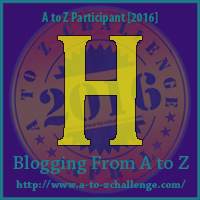 In the Old West, honky tonks were a mixture of bawdy music hall, cheap dance hall and brothel. They were lawless, violent places most of the time.
In the Old West, honky tonks were a mixture of bawdy music hall, cheap dance hall and brothel. They were lawless, violent places most of the time.
Where the saloon had its own social role in that it offered a place for men to meet up, socialise and exchange information on events inside the community and work (it often double up as post office), the honky tonk was really a den with no recognizable positive quality.
But there was music. The honky tonk was often a piano bar where a music related to ragtime was played. The pianos in those establishments were often poorly taken care for and were out of tune – when keys weren’t altogether missing. Thus this music would emphasise rhythm more than melody or harmony. It tended to be very straightforward.
These distinctive characteristics made honky tonk music evolve into a genre of its own and later acquired a kind of middle-brow status.
Because African Americans were barred more attractive work possibilities, most musicians played, and learned to play, in honky tonks, and here’s where jazz most probably acquired a few of its characteristics.
Honky tonks were working class places with a reputation for fleecing their customers and like saloons, they catered exclusively for men. They offered music and even shows where vocalists and dancers often mingled with patrons in what was a very basic form of communal creation. Later, they became very popular for jam sessions. Many early jazzmen remembered honky tonks with great fondness.
————————————————————————————————————————————–
RESOURCES
Neil Powell, The Language of Jazz. Routledge, 2000
World Wide Words – Honky Tonk
Smashwords | Barnes&Nobles | Kobo | iBookStore
And many other stores
The post Honky Tonk (AtoZ Challenge 2016 – Jazz Age Jazz) appeared first on The Old Shelter.
April 7, 2016
Great Migration (AtoZ Challenge 2016 – Jazz Age Jazz)
JAZZ AGE JAZZ - The Great Migration #AtoZChallenge #jazz travels North to Chicago and NYC
Click To Tweet
 There’s a romantic story which tells of how jazz came up North, particularly to Chicago, on the Mississippi riverboats after Storyville was closed down in New Orleans in 1917.
There’s a romantic story which tells of how jazz came up North, particularly to Chicago, on the Mississippi riverboats after Storyville was closed down in New Orleans in 1917.
History is a lot less charming. Jazzmen came to the North the same way and for the same reasons multitudes of other African Americans did in the years between the 1910s and the 1940s. It was later called the Graet Migration.
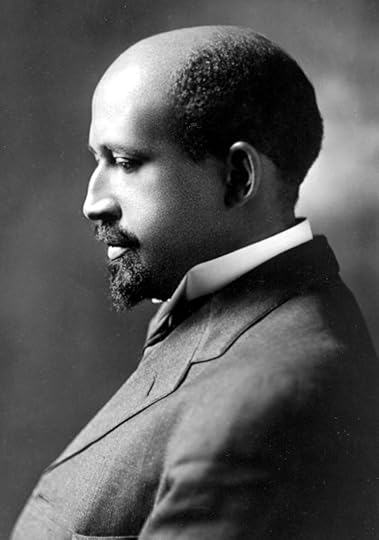 WEB DuBois was one of the most influencial black leaders of the beginning of the XX century and one of the stronger opposers to jazz
WEB DuBois was one of the most influencial black leaders of the beginning of the XX century and one of the stronger opposers to jazzAt the beginning of the XX century, crops failed for several years in the Southern States due to bug infection. At the same time the demand for jobs raised in the North since during WWI European immigration had virtually ceased, diminishing the supply of unskilled labour.
Black newspapers – notably the Chicago Defender – actively advertised this demand for workers in the North and campaigned so that African Americans left the South for the more liberal North. The Defender was actually so proactive that it was banned in many Southern communities who feared that the departing of so many young black men and women would leave them without unskilled labour.
But life in the North didn’t prove as good as many hoped for. True, Northern States didn’t have legal segregation, but discrimination often jammed African Americans into crowded inner city neighbourhoods. Many of these northern communities had been quite small before the Great Migration and had merged in a more or less seamless way in the fabric of big cities. But the Great Migration made the number of African Americans bulge in many cities, which created tension inside and outside those communities. Coexistence between old settlers and newcomers became very difficult. The rural culture of the new immigrants from the South was very different and in many ways less refined than that of African Americans who had lived in the North for generations. Newcomers were criticized for their “primitive behaviour” and accused of attracting negative attention to the community. They were also criticised for their preference in the matter of entertainment, since they seemed to prefer speakeasies and the new music like jazz, but also blues, because it reminded them of home, but were often connected with vice in the mind of many people. Many welfare associations, such as the Urban League, tried to counter this idea by organising alternatives, more ‘wholesome’ activities for the newcomers, so to battle the impression that vice equated ‘black community’.
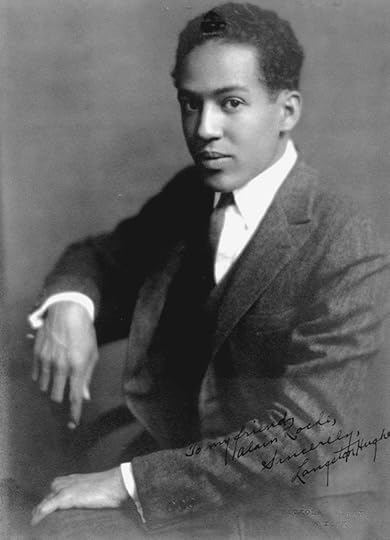 One of the most influencial artists of the Harlem Renaissance, Langston Hughes used jazz as a language in his writing
One of the most influencial artists of the Harlem Renaissance, Langston Hughes used jazz as a language in his writingWhen New Orleans and other hot style musicians moved North, their status of newcomers produced new objections to jazz. It was wild and primitive, it didn’t sound like music and it was performed in disreputable places with underworld connections. The average Negro family did not allow that kind of music.
The large numbers of migrants created distinctive black communities throughout the North. In the 1920s, more than 75.000 black Americans moved to New York City’s upper
Manhattan area, making Harlem the “Negro Capital of the World”. It was in Harlem that African American art flourished more fully in the movement that came to be known as the Harlem Renaissance.
Home to nightclubs and fledging recording companies, Harlem was also the centre of African American writers, artists and spokespersons of the Harlem Renaissance.
Most musicians were not given the same recognition as writers, though, and on their part – and maybe in response to that – jazz musicians don’t seem to have paid much attention to the manifestation of artistic pride.
It was in Harlem that a deeper, more complex debate about jazz took place. Harlem Renaissance leaders generally dismissed jazz as a lower music. Some leaders disdained it because of its identification with vice, crime and migrants’ “backwardness”. And when Primitivism became a fashion, many black leaders criticised jazz and the entertainment it produced for reinforcing the negative stereotypes Primitivism seem to encourage.
On the other hand, prominent Harlem Renaissance intellectuals praised jazz and blues as a new language, a new means of communication atoned to the new times, and they tried to assimilate it into their novels, poems and paintings. This evocation of jazz usually included a recognition of the participatory and expressive tradition of blues and jazz.
Popular as it was, jazz didn’t have an easy life in the 1920s.
—————————————————————————————————————————————-
RESOURCES
Ogren, Kathy J., The Jazz Revolution. Twenties America and the Meaning of Jazz. Oxford University Press, New York, 1989
University of Chicago Library – Chicago, Jazz and the Great Migration
Jazz in America –
Music in the World – How the Great Migration effected the development of Blues music
Synonim – The Great Migration and the Roaring Twenties
Shmoop – Society in Blues Music History
Smashwords | Barnes&Nobles | Kobo | iBookStore
And many other stores
The post Great Migration (AtoZ Challenge 2016 – Jazz Age Jazz) appeared first on The Old Shelter.
April 6, 2016
Films (AtoZ Challenge 2016 – Jazz Age Jazz)
JAZZ AGE JAZZ - Films #AtoZChallenge The common history of early #jazz and #film
Click To Tweet
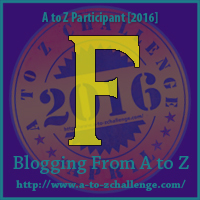 Jazz and films went down the same way for a long time, almost hand-in-hand. They both first appeared at the turn of the XX century. They both found it hard to be accepted as legitimate art, especially at the beginning. They both went through the ordeal of the electric recording revolution. But because sound make its appearance at the very end of the decade, most of the rich history of jazz and film lies beyond the 1920s.
Jazz and films went down the same way for a long time, almost hand-in-hand. They both first appeared at the turn of the XX century. They both found it hard to be accepted as legitimate art, especially at the beginning. They both went through the ordeal of the electric recording revolution. But because sound make its appearance at the very end of the decade, most of the rich history of jazz and film lies beyond the 1920s.
But even in the time of the silent movies jazz entered the movie theatres. In the bigger houses, bands accompanied the films, and especially in black establishments, the music was often jazz.
Jazz was there at the very dawn of the talkies. In fact the first feature-length film had the very word in the title: The Jazz Singer. In those early days, very important jazzmen and blueswomen found their way to the silver screen.
The Jazz Singer (1927)
Based on a short story by Samson Raphaelson from 1921 (A Day of Atonement) and adapted by Alfred Cohn, The Jazz Singer wasn’t actually the first film with sound in it, but was indeed the first feature-length Hollywood film to use sound and spoken dialogue as part of the dramatic action. Only about 25% of the film offers sound, most of it songs and pieces of dialogue.
Despite its title, the film has very little to do with the music played by artists such as Louis Armstrong or Jelly Roll Morton. It is rather an account of the Old World versus the New World, where Al Jolson is a Jew trying to adjust to a new life. So the word ‘jazz’ speaks of what that meant in the 1920s for people of that time. Jazz represented the emotional release and freedom of a generation who wanted to break with the past and with established social conventions, to seek a new, different future.
St Louis Blues (1929)
In 1929, WC Handy and Kenneth W. Adams wrote the treatment of a short film based on Handy’s song St Louis Blues.
Bessie Smith was hired in the role of a woman cheated by her man in every possible way and on any possible occasion. Though the movie was criticise because it presents many stereotypes attached to African Americans, it was a huge success because of Bessie.
At just over fifteen minutes, it was the first of a variety of similar features that became popular between 1929 and 1932.
Black and Tan (1929)
This was the first film where Duke Ellington appeared. It was made on the same set and with the same crew with overlapping schedules with Bessie Smith’s St Louis Blues. It is also a short movie.
Story isn’t usually important in short musical performance film, but this one is a lot more tragic than it would be seen in jazz films of the following decades and it doesn’t shy away from showing African American’s actual position in the entertainment business.
———————————————————————————————————————————–
RESOURCES
Ogren, Kathy J., The Jazz Revolution. Twenties America and the Meaning of Jazz. Oxford University Press, New York, 1989
The Librery of Congress – Jazz on the Sceen
Musicals 101 – 1927-1930: Hollywood learns to sing
The New York Review of Books – Not quite all that jazz
The Virginia University – The Jazz Singer
Film Site – The Jazz Singer
Red Hot Jazz – St Louis Blues
Phish.net – Black and Tan
Weird Wild Realm – Balck and Tan
Smashwords | Barnes&Nobles | Kobo | iBookStore
And many other stores
The post Films (AtoZ Challenge 2016 – Jazz Age Jazz) appeared first on The Old Shelter.

